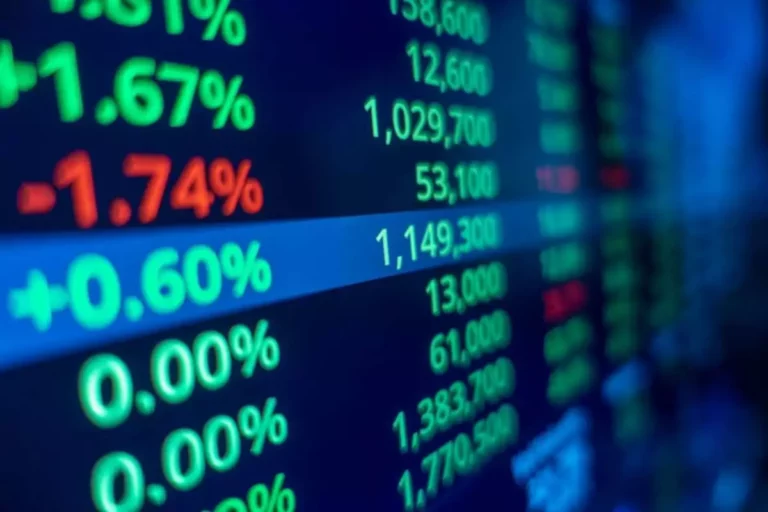Certain double or triple leveraged ETFs can lose more than double or triple the tracked index. These types of speculative investments need to be carefully evaluated. If the ETF is held for a long time, the actual loss could multiply fast. 1 ETFs at Charles Schwab & Co., Inc. (“Schwab”) can be traded without a commission on buy and sell transactions made online in a Schwab account.
Let’s look at which ETFs give you the most liquidity and, therefore, the most opportunity for profit. Investors should consider carefully information contained in the prospectus or, if available, the summary prospectus, including investment objectives, risks, charges, and expenses. Almost every investment niche—from small-cap stocks to emerging markets or oil—can be fulfilled by a vast range of exchange-traded funds (ETFs). So how do you choose when you’re faced with many alternatives within the same fund categories? While every situation is unique, here are some guidelines to help you with your research.
Commodity-related products carry a high level of risk and are not suitable for all investors. This is why it’s important to clarify and understand how to determine ETF liquidity. Choosing a suitable Exchange Traded Fund (ETF) liquidity provider stands out among the many elements influencing an investor’s success.
ETFs and individual stocks both trade on a stock exchange, leading many investors to believe that the factors that determine the liquidity of the two securities must also be similar. Exchange-traded funds (ETFs) offer many benefits to investors, including flexible intraday trading, efficient market access and potentially lower costs. When it comes to an individual company, it typically has a fixed supply of shares trading on the open market, and the average daily trading volume is a strong indicator of its liquidity.
Communications such as this are not impartial and are provided in connection with the advertising and marketing of products and services. Explore insights into an evolving investment landscape and the explosive growth of exchange traded funds (ETFs). The information provided does not constitute investment advice and it should https://www.xcritical.in/ not be relied on as such. It should not be considered a solicitation to buy or an offer to sell a security. It does not take into account any investor’s particular investment objectives, strategies, tax status or investment horizon. State Street launched the first US-listed ETF in 1993 — the SPDR® S&P 500® ETF (SPY).
Frequent trading of ETFs could significantly increase commissions and other costs such that they may offset any savings from low fees or costs. Because of their narrow focus, sector investing tends to be more volatile than investments that diversify across many sectors and companies. Bid-ask spread is the difference between the best ETF Liquidity Provider buy and the best sell orders. On the other hand, if you buy Nippon ETF, it will get executed at an average price of 22.17, just 0.3% above current market price. If you place a market order of 25,000 units (roughly Rs 50 lac), you might move the price upwards and the impact on final purchase price could be worse (market impact cost).

An ETF’s liquidity is affected by the securities that it holds, the trading volume of the securities that it holds, the trading volume of the ETF itself, and, finally, the investment environment. Being aware of how these factors affect an ETF’s liquidity, and therefore how its profitability will improve results, becomes especially important in environments where every basis point counts. The views and information discussed in this report are as of the date of publication, are subject to change and may not reflect current views.
- This website is a general communication being provided for informational purposes only.
- A double-leveraged ETF does not always mean you will see double the return of the index.
- Individuals who invest in ETFs with fewer actively traded securities will be affected by a greater bid-ask spread, while institutional investors may elect to trade using creation units to minimize liquidity issues.
- Is it possible to buy ETF shares that amount to roughly nine times the ETF’s current AUM?
- In summary, there are multiple dimensions of measuring ETF liquidity.
The more efficiently an AP can access the underlying market, the more ETF shares it can create and redeem. Liquidity in the primary market depends upon the value of the underlying shares that back up the ETF. While liquidity in the secondary market depends upon the weight of ETF shares traded. The liquidity of most ETFs is measured from their underlying assets because of their unusual creation and redemption procedure. The underlying asset could be stocks, bonds, gold, or other securities. ETFs, which compete with mutual funds but trade like stocks, have some notable advantages over those alternatives.
Costs such as a management fee, fund accounting and trading expenses, and load fees for sale and distribution. One ETF can give exposure to many stocks from a particular industry, investment category, country, or a broad market index. ETFs can also provide exposure to asset classes other than equities, including bonds, currencies, and commodities. Duplicating that benefit by buying individual stocks would be much more cumbersome in terms of the research and trading required, and likely more expensive.
Hence, ensure that you look at the trading volumes of the ETF before buying. Try to identify any declining trend and analyze the reasons behind it before taking the plunge. This is an important question, as the answer will help you choose the right ETF with ease. While some investors opt for ETFs for portfolio diversification, others choose them as an alternative to stocks.
A high swing over a couple of hours could induce a trade where pricing at the end of the day could keep irrational fears from distorting an investment objective. For some sectors or foreign stocks, investors might be limited to large-cap stocks due to a narrow group of equities in the market index. A lack of exposure to mid- and small-cap companies could leave potential growth opportunities out of the reach of ETF investors. Mutual funds, on the other hand, are required to distribute capital gains to shareholders if the manager sells securities for a profit. This distribution amount is made according to the proportion of the holders’ investment and is taxable.
The average daily volume of shares moved in the secondary market amongst traders adds to an ETF’s liquidity. Investors and traders in any security benefit from greater liquidity—that is, the ability to quickly and efficiently sell an asset for cash. Investors who hold ETFs that are not liquid may have trouble selling them at the price they want or in the time frame necessary. Moreover, if an ETF invests in illiquid shares or uses leverage, the market price of the ETF may fall dramatically below the fund’s net asset value (NAV). Lower levels of liquidity lead to greater bid-ask spreads, larger discrepancies between net asset value (NAV) and the value of the underlying securities, and a decreased ability to trade profitably.

Ultimately this can lead to higher transaction costs for investors when buying or selling an ETF. This website is a general communication being provided for informational purposes only. It is educational in nature and not designed to be a recommendation for any specific investment product, strategy, plan feature or other purposes. By receiving this communication you agree with the intended purpose described above. Any examples used in this material are generic, hypothetical and for illustration purposes only. Morgan Asset Management, its affiliates or representatives is suggesting that the recipient or any other person take a specific course of action or any action at all.


